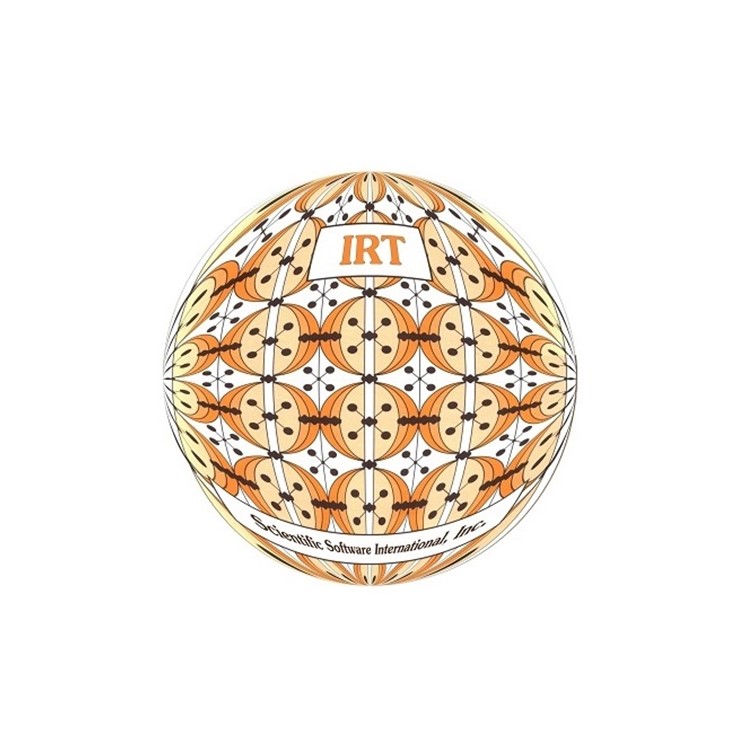BILOG-MG4 項目反應測試軟體

- BILOG-MG4 項目反應測試軟體
-
類別研究分析軟體
-
介紹使用這個Windows版本的BILOG-MG,舊版BILOG for Windows產品已經過時了。BILOG-MG-4具有BILOG的所有功能,加上差分項功能(DIF),項目參數漂移,等效和非等效組等同,垂直等同,兩階段測試,組均值估計,標準偏差和潛在分佈。
BILOG-MG 4 Project Response Test Software
BILOG-MG is an extension of BILOG that is designed for the efficient analysis of binary items, including multiple-choice or short-answer items scored right, wrong, omitted, or not-presented. BILOG-MG is capable of large-scale production applications with unlimited numbers of items or respondents. It can perform item analysis and scoring of any number of subtests or subscales in a single program run. All the program output may be directed to text files for purposes of selecting items or preparing reports of test scores.
BILOG-MG implements an extension of Item Response Theory (IRT) to multiple groups of respondents. It has many applications in test development and maintenance. Applications of multiple-group item response theory in education assessment and other large-scale testing programs include the following features.
Nonequivalent groups equating for maintaining the comparability of scale scores as new forms of the test are developed.
Vertical equating of test forms across school grades or age
groups.
Analysis of Differential Item Functioning (DIF) associated with demographic or other group differences.
Detecting and correcting for item parameter trends over time
(DRIFT).
Calibrating and scoring tests in two-stage testing procedures designed to reduce total testing time.
Estimating latent ability or proficiency distributions of students in schools, communities, or other aggregations.
In addition, BILOG-MG provides for variant items that are inserted in tests for purpose of estimating item statistics, but that are
not included in the scores of the examinees.
Examples
A list of examples discussed in the BILOG-MG Guide is given
below, along with extra examples and a zip file containing all
examples and data.
Conventional single-group IRT analysis
Differential item functioning
Equivalent groups equating
Vertical equating
Multiple matrix sampling data
Analysis of variant items
Group-wise adaptive testing
Estimating and scoring tests of increasing length
Commands for parallel-form correlations
EAP scoring of the NAEP forms and state main and variant tests
Domain scores
Extra examples (zipped)
Support
SSI, Inc. offers a technical support service via e-mail. This service is only available to registered end users of the SSI software products. Click here to view SSI’s policy and procedures for obtaining
technical support.

產品安裝硬體規格
Stable release: Version 4.0
Release candidate: n/a
Actively supported version: Version 4.0
Legacy software support: Versions 3.00+

BILOG-MG4 項目反應測試軟體
BILOG-MG是BILOG的擴展,它是為有效分析二元項目而設計的,包括選擇題或簡答題的正確、錯誤、遺漏或未呈現的項目。 BILOG-MG能夠進行大規模的生產應用,其項目或被調查者的數量不受限制。它可以在一個程序運行中對任意數量的子測驗或子量表進行項目分析和評分。所有的程序輸出都可以直接輸出到文本文件中,用於選擇項目或編寫測試成績報告。
BILOG-MG實現了項目反應理論(IRT)對多組被調查者的擴展。它在測試開發和維護方面有很多應用。多組項目反應理論在教育評估和其他大規模測試項目中的應用包括以下特點。
當開發新的測驗形式時,用於保持量表分數的可比性的非等效組等效。
跨年級或年齡組的測驗形式的垂直等值化。
分析與人口統計或其他群體差異相關的差異性項目功能(DIF)。
檢測和糾正項目參數隨時間變化的趨勢(DRIFT)。
在兩階段測試程序中校準和評分,以減少總測試時間。
估計學校、社區或其他集合體中學生的潛在能力或能力分佈。
此外,BILOG-MG還提供了一些變異項目,這些變異項目是為了估計項目統計而插入測試中的,但不包括在受試者的分數中。
例子
下面給出了BILOG-MG指南中討論的例子列表,以及額外的例子和包含所有例子和數據的壓縮文件。
傳統的單組IRT分析。
差異化項目功能
等價組等價
豎向等式
多矩陣抽樣數據
變異項目分析
分組適應性測試
越來越長的估算和評分測試
平行形式相關性命令。
NAEP表格的EAP評分和各州的主要測試和變式測試。
領域得分
額外的例子
支持
SSI, Inc. 通過電子郵件提供技術支持服務。此服務只適用於 SSI 軟體產品的註冊終端使用者。請按這裡查看 SSI 的政策和程序,以獲得技術支援。

MODDE 13 實驗計劃與分析軟體
MODDE引導您完成您的試驗設計(DOE)設計的設置和支持你在隨後的數據分析。對於醫藥和其他關鍵應用領域,因為任何人在產品開發都知道,把事情從一開始就是一個挑戰。特別是有這麼多的參數來考慮。對於像醫藥產業領域的成果是至關重要的,競爭是激烈的,你需要的工具,你可以肯定將讓你在市場上的時間。
Miner3D 視覺數據分析軟體
資料分析不需很複雜。Miner3D 是容易的方法去創造想像力,極大量資料導向圖形。Miner3D 是一個結合視覺交互式環境做成基本資料分析和圖表。它的特色是強大功能的使用者界面以控制按鈕創造和自訂化您的圖表。財務專家、藥物研究員、生物科技或者材料研究、地質學家、採礦專家、加工和品質管理員、市場研究人員、銷售主任和許多其他專家使用Miner3D為做出快速地準確性的事業重大決定。
SIGMA/W 抗壓變形分析軟體
SIGMA/W一款用於對岩土結構中的應力和變形進行有限元分素析的專業軟體。它具有全面的本構模型公式,使得這款軟體不但可以對簡單的岩土問題進行分析,也可以對高度複雜的岩土問題,如線性彈塑性、非線性彈塑性、非線性等進行分析,許多經典的土體模型可以使用戶對各種土體或結構材料進行建模分析。

